Xmas Greetings 1912
By Simon Miller, Library Technician, State Library of Queensland | 19 December 2013
The State Library's collection of ephemera includes several boxes of Christmas cards, one of the earliest of which comes "with the compliments of the season from The Minister (Hon. J. G. Appel) and Officers of the Home Department" from 1912. This simple seasonal greeting is packed with fascinating clues about the Queensland of 1912 and in particular the operations of the Home Department at that time.
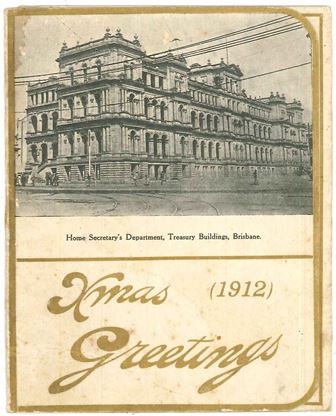
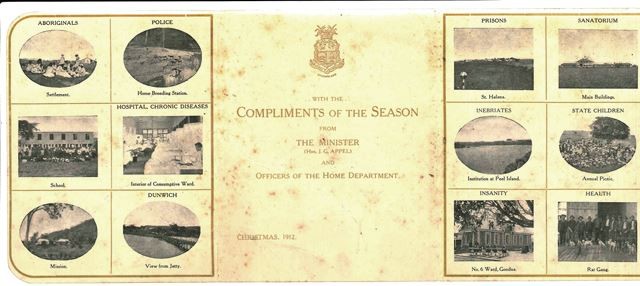
First we can have a glance at The Minister, the Hon. J. G. Appel. John George Appel was born at South Brisbane in 1859. After being a foundation scholar at the Brisbane Grammar School he studied law, being admitted to the bar in 1880. He abandoned legal practice in 1889 to take up farming in the Nerang Valley. He took a keen interest in local government serving on the Hamilton and Nerang Shire Councils and was twice Mayor of Nerang. In 1908 he was elected to the state seat of Albert, retaining the seat until his death in 1929. He was appointed Secretary for Mines and Public Works in 1908 and Home Secretary in 1909, holding both portfolios until February 1915. He made use of his local government experience in drawing up the Local Authorities Act. Appel toured extensively in the government steamer Otter, travelling as far north as Daru in south west Papua. He was also a gifted amateur singer with a wide following.
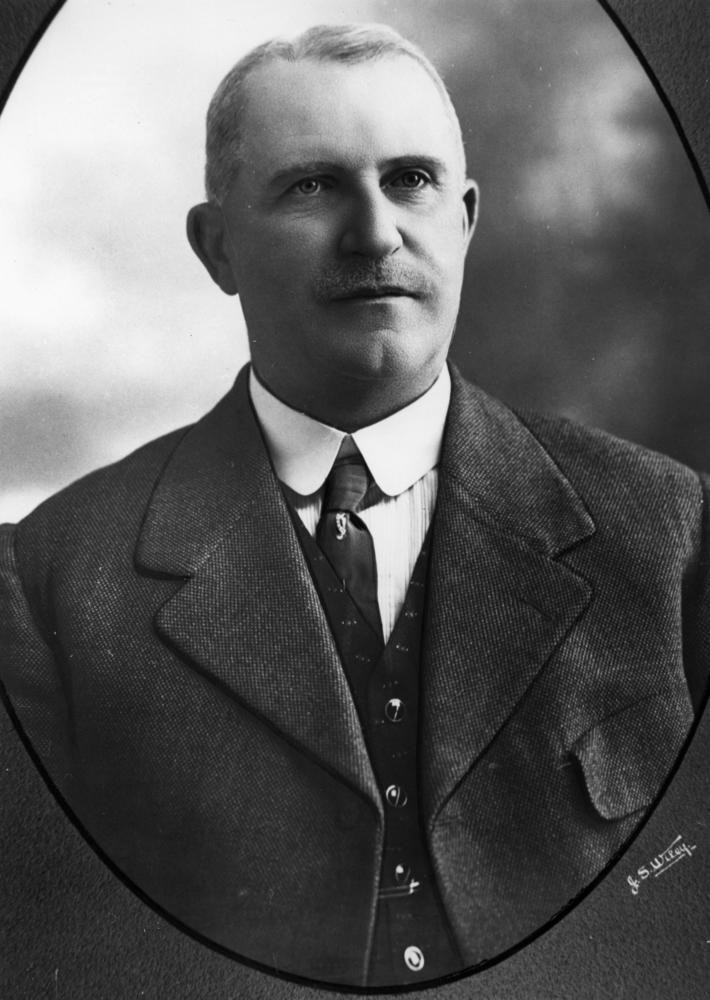
The Library holds several collections of papers and records relating to John George Appel and the Appel family.
The 1912 Xmas card is decorated with a series of small photographs depicting aspects of the the work of the Home Department. The Department evidently had responsibility for 'Aboriginals' with pictures of an unspecified settlement, school and mission. The Queensland government had established a number of Aboriginal settlements including Barambah, now known as Cherbourg, founded by the Salvation Army in 1900 and taken over by the state government in 1905, and the Taroom Aboriginal Settlement, established in 1911, which was the first settlement established by the government. The residents of Taroom were relocated to Woorabinda in 1927.
These photos are followed by a picture of the Police Horse Breeding Station. The police service at the time relied heavily on horses for transport, particularly in the North. In 1904 Police Commissioner Parry-Okeden recommended that the police should establish their own horse breeding station to supply mounts to the force. A stud farm was first established at Woodford but that proved to be too small and in 1908 they obtained a reserve of 78,000 acres which was named Rewan. 1912 saw the first 69 Rewan bred horses ready to start work. The station was badly affected by droughts and in 1933 it was admitted to have been a failure and was closed down. The Queensland Police Service will be celebrating their 150th anniversary in 2014.
The next picture shows the interior of a 'Consumptive Ward' in a hospital for chronic diseases, possibly the Diamantina Hospital for Chronic Diseases in South Brisbane. Tuberculosis was a serious problem in 1912 and the illustrations on the card also include a photo of a Sanatorium, which appears to be the Jubilee Sanatorium at Dalby. This was one of a number of Jubilee Sanatoriums set up around the world by the Queen Victoria Homes for Consumptives Fund established in 1897, and was opened in 1900 to provide treatment to TB patients in the curable stages of the disease.
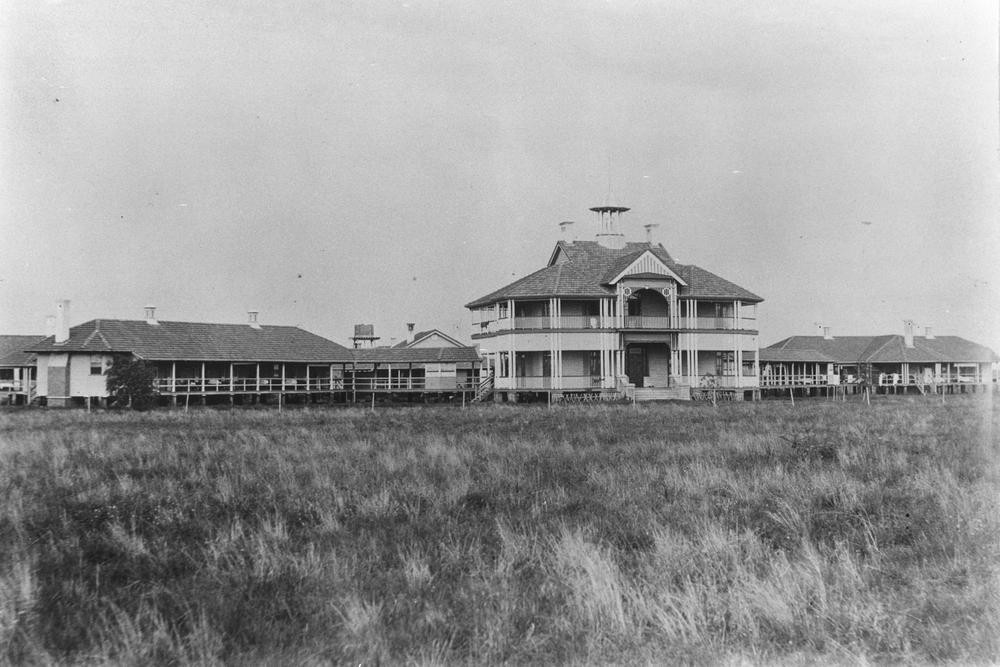
Moreton Bay islands feature in three of the photographs. Firstly there is a view of Dunwich on Stradbroke Island taken from the Jetty. Dunwich was home to the Dunwich Benevolent Asylum which since 1865 had taken in “The blind, crippled, mentally deficient, terminally ill, cancerous, tuberculosis and leprosy patients, inebriates and others” who, according to Whom nobody owns : the Dunwich Benevolent Asylum, an institutional biography 1866-1946 by Joseph B Goodall, "were shipped indiscriminately to the island." Goodall goes on the say “Debates on the purpose and effectiveness of the benevolent asylum appeared in the newspapers and parliament, but avoided the point that the benevolent asylum was a dumping ground for unwanted burdens on society.”
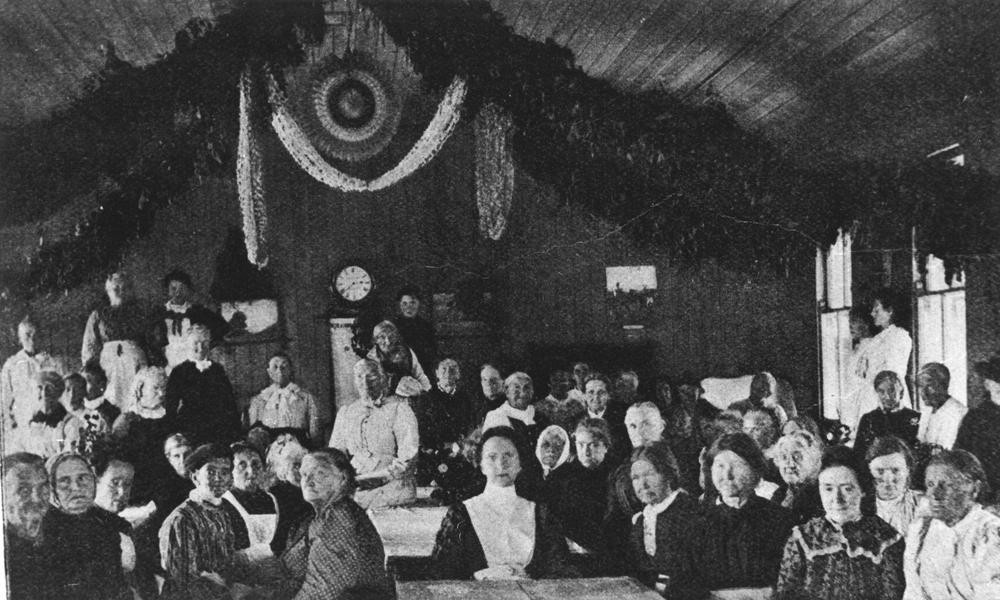
The Benevolent Asylum operated at Dunwich until 1946 when it was moved to vacant RAAF buildings at Sandgate. In 1910 some of the residents of Dunwich identified as 'Inebriates' were planned to be moved to Peel Island which at the time also housed a Leper colony. The institution at Peel Island is the next image on the card. Some of the Dunwich inmates objected the proposed move and this article from the Brisbane Courier shows the pragmatic strategy adopted by Home Secretary Appel to deal with the problem.
The Home for Inebriates at Peel Island is now ready for the reception of male inmates, but an unfortunate difficulty has arisen. It has been the practice in the past, under the Inebriates' Act, to commit those sufferers to Dunwich, where there are about 20 of them at present. Having been committed to Dunwich, there is no power under the Act to deport them from Dunwich to Peel Island, and some of them are opposed to the change. The Home Secretary proposes to overcome the difficulty by discharging such of the inebriates as do not consent to leave Dunwich for Peel Island. Should occasion arise thereafter to recommit them to an Inebriates' Home, then they will be committed to Peel Island. The staff appointed to the Peel Island institution consists of a superintendent and his wife as matron, a cook, and an attendant. The cook and attendants are being utilised at Dunwich, whilst the superintendent and matron are engaged in getting everything in order at Peel Island, installing the furniture, &c. Quarters are being prepared for nurses, and as soon as these are ready the institution will be ready to receive female inebriates.
The third island pictured is St. Helena which served as Queensland's main prison from 1867 until the 1920s when most of the prisoners were moved to Boggo Road, the last prisoners leaving the island in 1933. The prison's island location made it virtually escape proof. The prison island was extensively farmed and largely self sufficient and the prisoners were kept busy working the land and in workshops for saddlery, tailoring and other trades. In 1911 two prisoners went missing for twelve days and had been thought to have escaped but eventually emerged, having been hidden in the ceiling of the tailoring workshop.
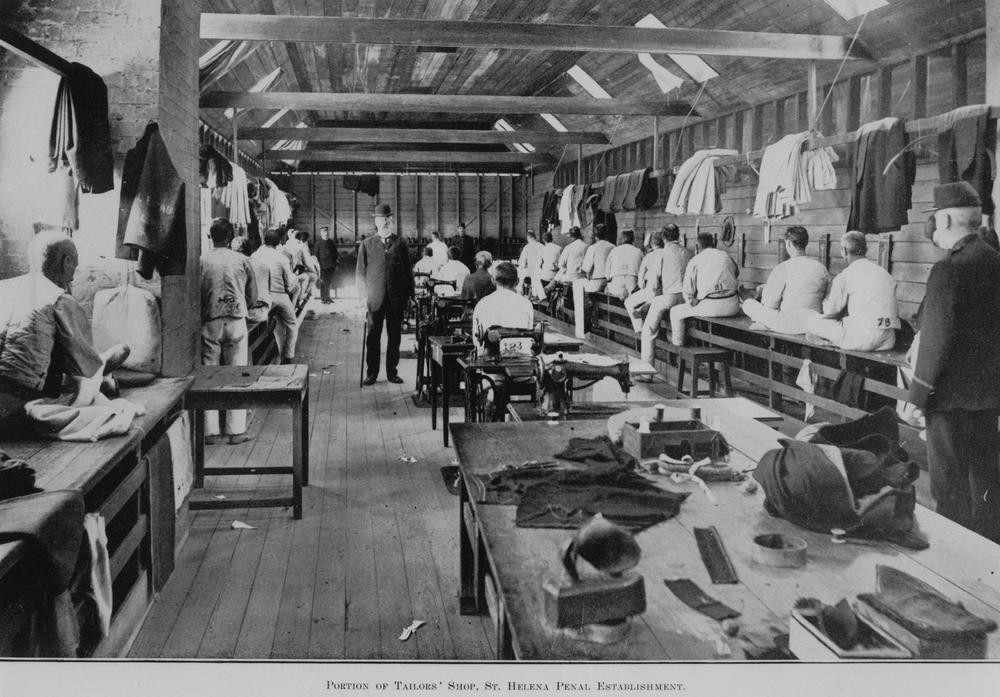
Next we find a picture of 'State children', presumably orphans and wards of the state, on their annual picnic. One such outing is described in the Brisbane Courier of 7 April 1911.
Yesterday was a red letter day for the orphan children who are under the care of the State in Brisbane. A picnic excursion was held, some 200 children having a pleasant trip to Redcliffe in the Government steamer Lucinda. The party left Brisbane shortly after 9 o'clock, disembarking at Redcliffe where a very happy two hours were spent. The refreshments were provided under the direction of the Home Secretary, while soft drinks were given to the children on board. The arrangements were in the hands of Mr G A Ferguson (Inspector of Orphanages) Mr Woolley (Assistant Inspector) and Mr. Clark (accountant), and their efforts were ably supported by the captain and the officers of the Lucinda. The party included 24 older children who are now in service in the immediate vicinity of the city. There were also a number of elder girls present by invitation who had passed out of State control, and they had the opportunity of meeting their brothers and sisters, or friends of their childhood days. The children were looked after during the day by about 50 foster mothers and helpers, together with eight members of the staff. Years ago these annual excursions were held, but for a time they lapsed, being renewed again last year. This excursion should have been held in January last, but owing to the bad weather then it had to he postponed. Fortunately on this occasion beautiful weather was enjoyed adding to the delight of the outing. The visitors present expressed pleasure at the neat appearance and healthy looks of the children.
The next photograph shows a ward of the Goodna Hospital for the Insane. This institution first opened in 1865 as the Woogaroo Lunatic Asylum and has since carried the names Mental Hospital Goodna, Brisbane Special Hospital, Wolston Park Hospital and the Park Centre for Mental Health. Over 50,000 people have been in the care of the hospital in its 150 year history.
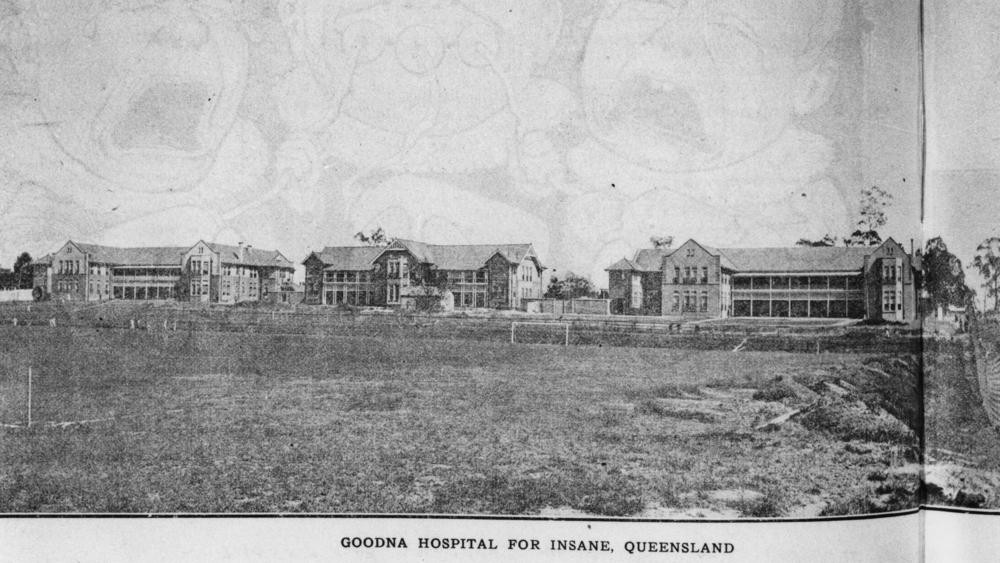
The final picture in the illustrations of the work of the Department shows a team of rat catchers with their dogs. These men and animals formed a vital part of Brisbane's public health infrastructure. In 1912 it was only ten years since an outbreak of plague had troubled the Queensland capital so that the importance of keeping down the rat population was well understood.
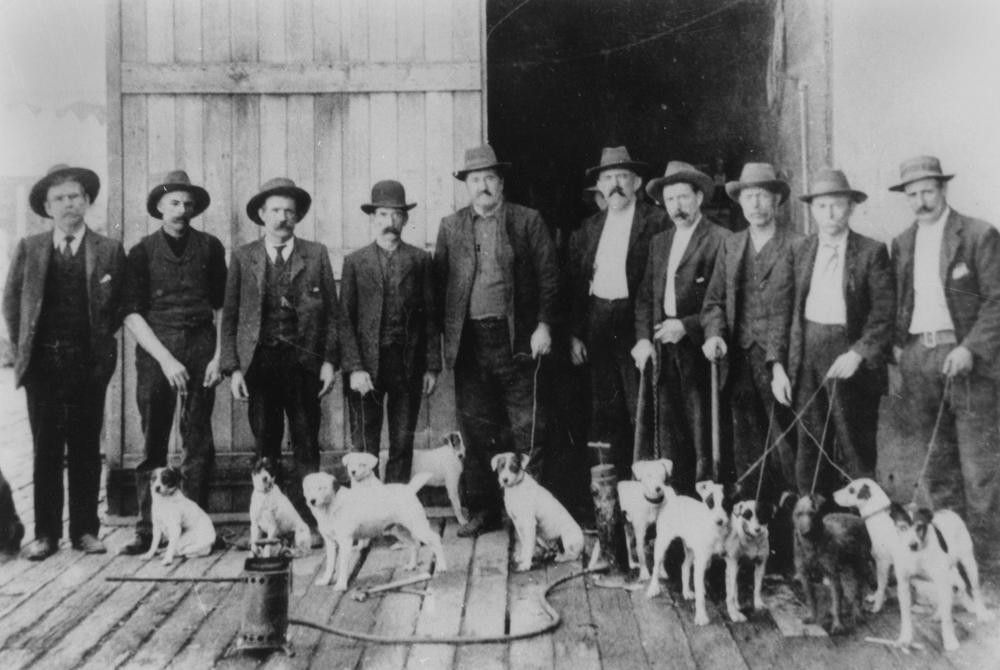
John Appel apparently greatly enjoyed the role of Home Secretary in the Queensland Government however this card would suggest that he had responsibility for all the most marginalized members of the population. He was charged with the oversight of Queensland's indigenous population, who would not even be recognized in the census for another 55 years and also the orphaned and abandoned children, the chronically ill, the convicts, the destitute, the inebriated and the insane. Perhaps it is not so surprising that he was depicted in a political cartoon with a careworn expression and the label 'my troubles'.
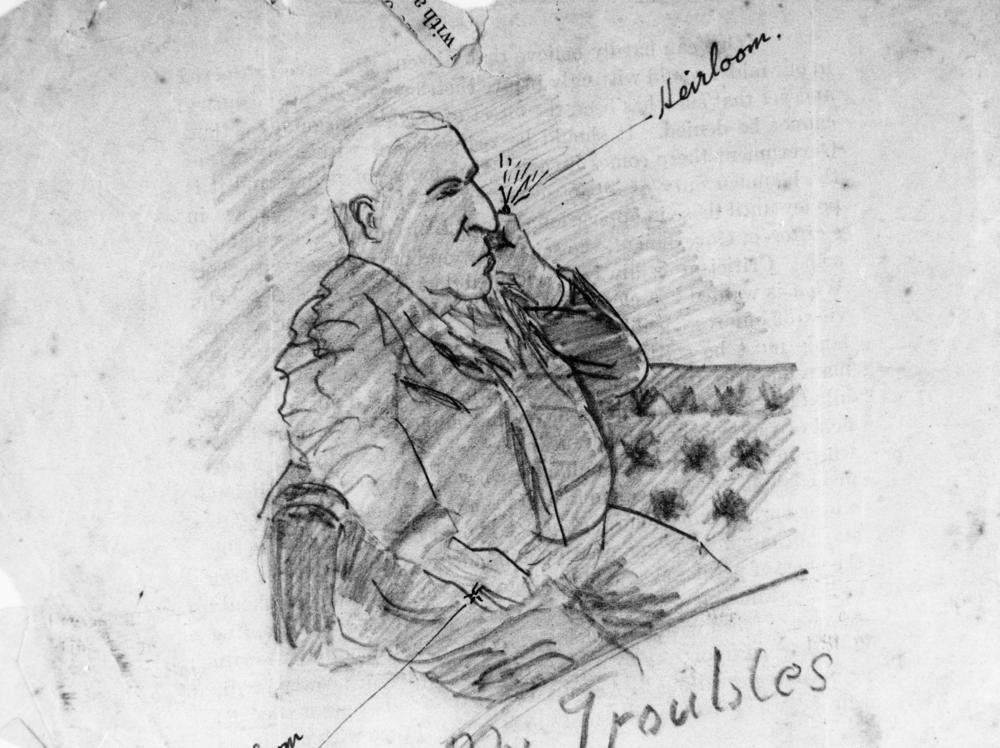
Comments
Your email address will not be published.
We welcome relevant, respectful comments.